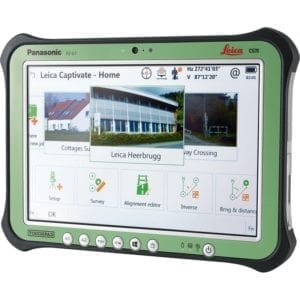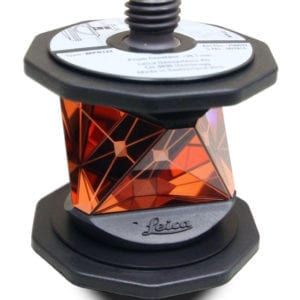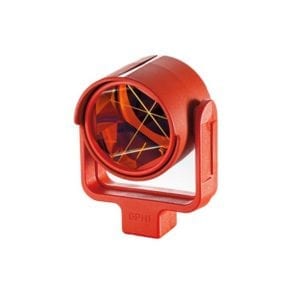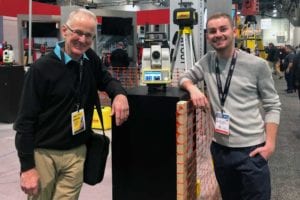Total stations are effective instruments that are used in building constructions and surveying. This equipment guarantees unparalleled accuracy and precision when taking any measurement, including sloping and angular distances.
In addition, it makes it easier to transfer and analyze your data and present it easily on your laptop or computer. That said, let us take a deeper look at total stations by understanding what they are, why you need them, and more importantly, what to look for when picking the best one to work with.
Total stations are instruments that can measure sloping and angular distances with great accuracy and precision. They use electronic transit theodolite and electronic distance meter (EDM) for taking horizontal and vertical angular measurements, as well as straight and sloping distances.
They are used for making angular measurements – The electronic transit theodolite inside can accurately measure horizontal and vertical angles. This angular measurement usually varies from five to ten arc seconds.
They are used in distance measurements – A total station has a modulated infrared carrier signal that emits and receives multiple frequencies to determine the most accurate distance from the target. A total station can measure distances as far as 1000 meters with an accuracy of 1.5 millimeters.
They also help coordinate measurements – This equipment can determine the easting, nothings, and elevation of an unknown point when surveying. They can also show the difference in elevations points. However, you must first know the coordinate of the place you are setting your total station to do this.
They are also used to process data – A total station is designed with an inbuilt microprocessor; hence, they can process the data collected for easier understanding by the user and can also generate a map of the surveyed area.
If you're curious about top picks for the best-selling robotic total stations, here are some top picks from the Leica brand.
Total station surveying has the following advantages:
• They are very convenient to work with. You can take multiple surveys, generate a simple map of the location, and measure any distances while standing at one location in a very short amount of time.
• They are highly accurate. They can measure very long distances (mostly up to 1500 meters) with an accuracy of a fraction of an arc second.
• They work fast. A total station can simultaneously measure sloping, angular, and straight distance while at the same time calculating coordinates between the points measured.
• They are very easy to use. It doesn't take a lot of skill to operate and analyze the data produced by a total station. In addition, you can effortlessly download the data gathered to your computer with the integrated computer-assisted drawing (CAD).
This type of total station requires two people to manually operate it to get the measurements that you want. Every part that is involved with measurement has to be mechanically operated; for example, before you take any measurements, you have to manually engage the electronic distance measurement (EDM), move and sight the prism, and you also need to manually turn the instrument when laying out each point.
This type is more of an improvement from the manual total station. For instance, it doesn't need human intervention to take measurements. It automatically follows the prism as it takes measurements. Only one qualified technician is required to operate it. And the person doesn't have to operate it manually; instead, you can pair it with a tablet and work remotely.
A robotic total station like Leica total station reduces the number of errors made while taking measurements. Since the operator is freed up from all the manual tasks, they have a better chance of gaining a clear view of the site; hence, they can quickly catch and resolve any issues that could arise when in operation.
Total Stations
Before you purchase a total station, consider the following vital features.
• The accuracy – Different total station types have varying accuracies. For instance, Leica robotic total station has an angular accuracy of 0.5' arc-second and a distance accuracy of 0.6mm. This makes it highly accurate. You should aim for the best accuracies.
• The distance it can measure – You should also ensure that the total station you are considering can measure long-distance accurately and precisely. The available ones today can measure distances from around 75 to 1000 meters. Leica total station can measure up to 1500 meters.
• Software capabilities – When buying a total station, you should consider one that can allow you to work efficiently and quickly due to its software capabilities. For example, modern ones can collect data, process and analyze it, generate a map, and connect to a computer. Afterward, it will automatically send information for further processing or any other usage.
• Weight – When in the field, you need something lightweight enough to make it easier to move around. Therefore, consider the weight of the total station you are considering buying.
Step 1. Gather all the tools you need like the cables, tribrach, tripod stand, survey stake, controllers, etc.
Step 2. Use a stake or a nail to mark your point of reference and set up your equipment there. Make sure to position it centrally over the stake or the nail.
Step 3. Set up the prism at the point you want to measure from where the total station is located.
Step 4. Adjust the total station where necessary. Ensure that the ground is flat and the tripod stand is firmly established on the ground.
Step 5. Attach your leica total station survey equipment on the tripod stand carefully and connect the necessary cables like the battery pack and the controllers.
Step 6. Power the total station on and use the controller to get accurate leveling. The total station has to be relatively flat to make accurate measurements.
Step 7. Adjust the fine level until you are in a position to get accurate readings.
Step 8. You can now start taking your measurements.
They work by emitting emit microwaves and infrared signals to the prism at the position you are sighting – the unknown coordinate. The emitted ray will be reflected back to the total station from the prism. After which, it will calculate the time difference and the speed of that wave to get the distance and angulation from the unknown sighting.
If you want to get the most accurate distance, angulation, and the level of elevation or declination between two points, a total station is the best tool you can use. A total station like Leica robotic total station is quite easy to work with. You should get one, try it out and practice more on how you can get the most accurate measurements with it. Contact us for the best total station prices and any other related tools you may need.







Leaving so soon?
Get Your Free Ultimate Buyer's Guide to Total Stations!
Unlock expert insights and make the right choice for your construction layout needs.
